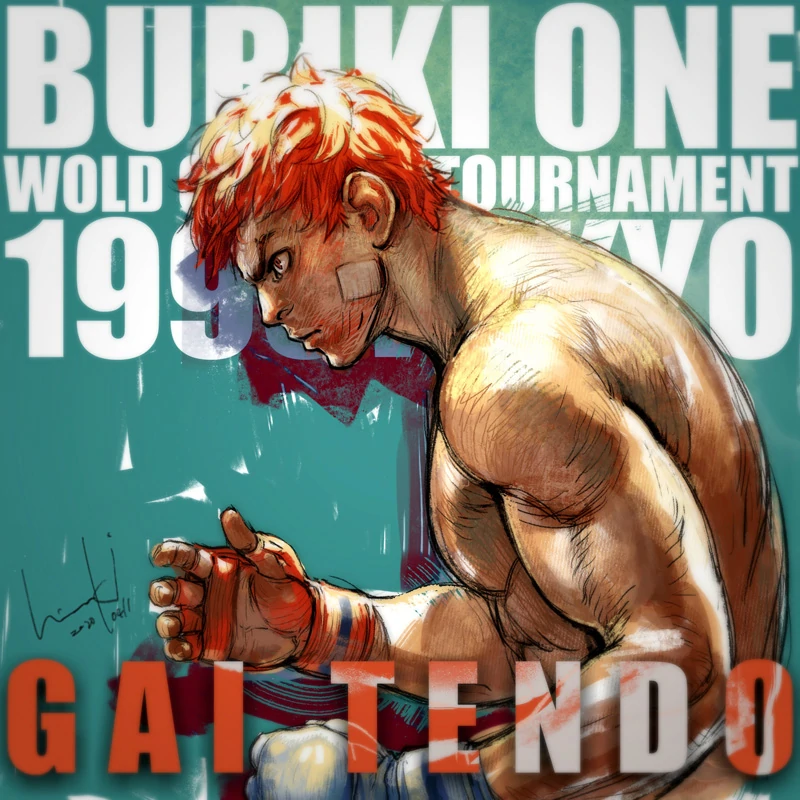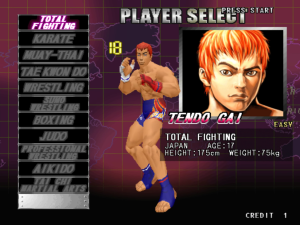It is no shocking revelation that fighting game characters are sometimes based on established sources. While there is no shortage of Bruce Lee clones in the genre, others are based on characters or humans with a sliding scale of fame. It takes only one look at Hawk from Best of Best to know that is Hulk Hogan, brother (brother [jack]), but other genre staples are reference works hiding in plain sight. While JoJo’s Bizarre Adventure is popular now, back in 1991 it was a tasty easter egg if you knew Guile owes his iconic hair to Battle Tendency’s Rudol von Stroheim. It might take a lot of cultural savvy (especially in Japanese culture), but with enough knowledge you will see a lot of the connective tissue that goes into designing fighting game characters.
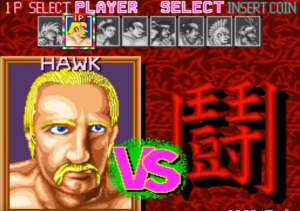
“Well let me tell you something Mean Gene, brother, brother, jack, the 24 inch pythons brother, jack, brother, me and the Mouth of the South Jimmy Hart jack, jack, brother, [Redacted Racism] – HH”
Which brings us to one of SNK’s more obscure works; Buriki One. A release for SNK’s short-lived Hyper Neo Geo 64 board, “Buriki One: World Grapple Tournament ’99 in Tokyo” was a fighting game based on the rise of Mixed Martial Arts. Each character on the roster represented a different form of martial art, looking to prove their craft is superior by winning over all the others. Sadly, Hyper Neo Geo 64 emulation is not entirely finished and there was no port of Buriki One, so unless you plan on finding it at an arcade any time soon your only option is to be a certified badass and get the original hardware plus make custom sticks to fit the ass-backwards control scheme.
Friend of the site GuileWinQuote went to great lengths to create a fully functional home setup for Buriki One, including a pair of custom controllers to fit the needs of the game as demonstrated in his video covering it.
The premise of the first Ultimate Fighting Championship isn’t the only thing Buriki One is taking notes from, as some of the roster directly references contemporary combat sports athletes. Ivan Sokolov is a direct shout-out to legendary Russian Greco-Roman wrestler Aleksandr Karelin (and really, any Russian wrestler character owes a great deal to Karelin). Pro wrestler Patrick Van Hayting could be an amalgamation of multiple people, as professional wrestling is in no short supply of gigantic white dudes who are bald and wearing black trunks. But most contemporary of all could be the protagonist of Buriki One, Gai Tendo, and his similarities to rising Japanese MMA star Kazushi Sakuraba.
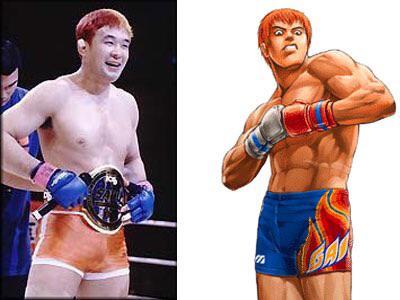
Calling it a “similarity” almost doesn’t do it justice.
While the UFC started in 1993 off the back of Royce Gracie’s tournament win, MMA in Japan has a more interwoven history with professional wrestling. Proto-MMA outfits like Shooto were started by Japanese pro wrestlers and many stars from the Japanese MMA promotion Pancrase were either pro wrestlers themselves or occasionally had “worked” (pre-determined) matches like in pro-wrestling. However, in 1997, the MMA world was introduced to its new king as the Japanese promotion Pride Fighting Championships was created. Modern day UFC would love for you to believe that they were always the big dog in town and being to MMA what Band-Aids are to adhesive bandages, but this is revisionist history. During many years of Pride FC’s run they were the most popular and well-renowned MMA promotion in the world, in fact many diehards of the sport still champion Pride as the zenith of mixed martial arts. While these early years saw many established MMA names flock to Pride, like the Gracies, Igor Vovchanchyn, Guy Metzger, Mark Coleman, one of Pride’s best homegrown stars was Kazushi Sakuraba.
Sakuraba was electric, there’s no other way to put it. Early MMA often found itself a little slow and unrefined, stand up striking was miles away from what fighters today can do and with long round timers the ground control could go on for ages. Sakuraba immediately stood out from the pack as someone who operated at a higher gear, chasing single leg takedowns with a fire so few could match and innovating against grounded opponents with flying stomps or cartwheels. Racking up wins and crowd appeal through these early Pride events, Sakuraba eventually faced off against a member of the Gracie family, Royler Gracie, at Pride 8. To those outside of MMA, I don’t know how to properly describe the scale of importance the Gracie family holds. In American Football, the Manning family has three all-timer quarterbacks, the Gracie family is like if the Manning family had 25 all-timer quarterbacks and they invented the role of the quarterback to begin with. So when Sakuraba defeated Royler Gracie (and I gotta be real, he smoked Royler. He made him look like a fool in there) and handed the Gracie family their first professional loss in decades, he opened a door he couldn’t close. Not only was this an extremely rare defeat of a Gracie, but it was done by Kimura submission. It was shocking that a Gracie would lose, it was blasphemous that a Gracie would lose by submission. This was a huge deal.
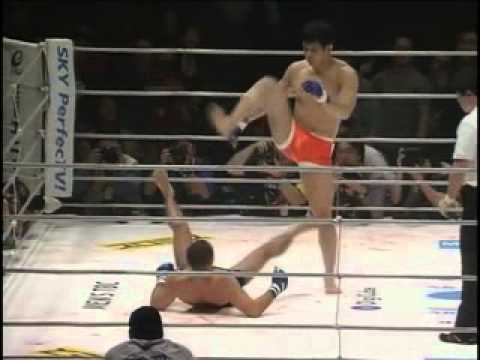
Royler found out the hard way that Brazilian Jiu-Jitsu doesn’t have an answer for getting the shit stomped out of you.
So huge, that Royce Gracie himself stepped up. Royce, the winner of the original Ultimate Fighting Championship tournament, is the most famous Gracie in the public’s eye and likely the inspiration behind Buriki One’s Jacques Ducalis. The thing with the Gracies is that, while basically inventing Brazilian Jiu-Jitsu and establishing themselves as an army of its best practitioners, they also knew how to keep their brand strong, let’s say. Royce protested that Royler’s loss was not legitimate as it came by referee stoppage and the Gracies had specifically requested their fights not include such reffing methods. So to make right what the Gracies saw as wrong, Royce would fight Sakuraba under a specific set of rules; no judges, no referee stoppages, an unlimited amount of 15 minute rounds, the fight would only end under knockout, submission, or one side throwing in the towel.
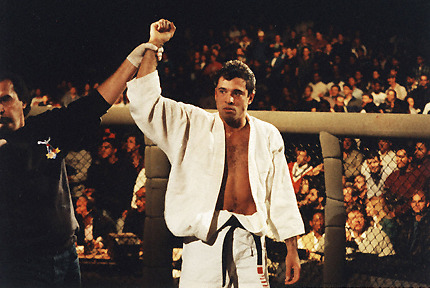
It is almost inarguable that Royce Gracie is the most influential person to ever step foot in a MMA ring. His inclusion in this fight adds a gravity the world wasn’t ready for.
May 1st, 2000. In front of a crowd nearly 40,000 large at the Tokyo Dome, Royce and Sakuraba both entered the fight of the century. Royce came to the ring accompanied by the famous “Gracie Train”, hand to shoulder with the other Gracie family members and teammates. Sakuraba however, did something very different. Appearing alongside two other men, all disguised by masks, Sakuraba and crew approached the ring with no one sure which one was the fighter. Sakuraba unmasked to reveal his now iconic bright orange hair, a dye job he had done as a bet with a Japanese TV comedian. Sakuraba had always worn bright orange trunks when fighting, but this complete look is what Sakuraba was known for, as tonight he was going to shake the very foundations of Mixed Martial Arts.
Royce versus Sakuraba lasted for an hour and a half. These men fought through six full rounds of 15 minute intervals, trading strikes, working the clinch, and navigating ground positioning against each other. As the grueling rounds continued, Sakuraba began to significantly damage Royce’s legs with low kicks. At the end of the sixth round Royce sat down in his corner and informed his team of the harsh truth; he couldn’t physically stand back up. Unbeknownst to him at the time, Sakuraba’s leg strikes had damaged Royce to the point where one of his femurs had fractured and he had not the ability to rise up off the stool to continue the fight. Left with no other choice, Royce’s brother Rorion threw in the towel. Sakuraba had done the impossible, he had defeated the pillar of worldwide MMA in his home country and solidified himself as a Japanese legend.
I understand if you don’t have a spare 2 hours lying around, but if you have the time please watch what is one of the most historic fights this sport will ever see.
To call Royce vs Sakuraba one of the greatest MMA fights in history almost sells it short. It marked a turn for the sport that deemed Sakuraba’s well-rounded fighting style superior to strict Brazilian Jiu-Jitsu. Both men became legendary figures in the sport and the influence of their bout has been felt to this very day. Given the unique ruleset, it will prove almost impossible that another fight can ever rival its length or importance. So it should be no surprise that Buriki One’s protagonist Gai Tendo, with his spunky attitude and bright orange hair, was created in the image of Japan’s top fighter and protagonist in the worldwide appeal of the sport.
There’s just one problem.
Buriki One came out May 21st, 1999.
Royce vs Sakuraba happened May 1st, 2000.
It’s easy nowadays to look at Gai Tendo and say “Oh, that’s Sakuraba”. Sure they look similar in build and dress, but it’s really the trademark orange hair that seals the deal. Sakuraba’s famous dye job was unique among his combat contemporaries, this isn’t the case where another popular MMA fighter in Japan around 1999 was rocking the orange hair look. So if you don’t look at the dates, it becomes a simple case of designing Gai Tendo with Sakuraba in mind. But the dates don’t line up like that; Gai Tendo’s design came out before Sakuraba ever dyed his hair.
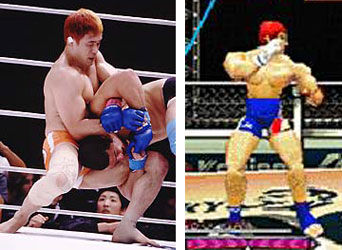
The image should honestly be reversed, because in terms of looks Gai came first before Sakuraba.
So what’s going on here? Was there a prior association Sakuraba had with dyeing his hair orange? Did Sakuraba see Gai Tendo’s design and decide to dye his hair because of it? It feels like grasping at straws but if it is purely coincidental that a fictional Japanese MMA protagonist and a real life Japanese MMA protagonist both had bright orange hair roughly within a year of each other, then we are dealing with an absolute whopper of a coincidence. It’s not that Gai Tendo and Sakuraba can’t be connected in some way, but that the circumstances of their similarities require some sort of information to concretely say one way or another.
So let’s hit the pavement and find the concrete. I attempted to contact multiple MMA journalists and historians to see if there was any more information known about Sakuraba’s orange dye. Tragically, I did not hear back from any of the inquires I put out. What was the most heartbreaking was hearing my question almost read out on the May 23rd episode of Wrestling Observer Live. As you can hear below, host Bryan Alvarez begins to read my question to Dave Meltzer, one of the leading pro wrestling and mixed martial art journalists and historians in the world, before getting confused and deciding to go with a different question instead. Demoralizing, I must admit, but I would eventually find my answer elsewhere.
Audio of Bryan starting my question and my email as proof (the full email is longer so I don't blame him for trying to read it all [please answer it next mailbag segment pls pls pls 😭]) pic.twitter.com/OEQ8qDUzVK
— ☆「YASE」IdolismJ.bsky.social☆ (@IdolismJ) May 23, 2023
“You can actually pinpoint the second when his heart rips in half”
Buriki One was one of the earlier works in the catalog of SNK artist Hiroaki, who is known nowadays for the art of modern KoF games as well as making the incredibly sexy ikemen look for Hwoarang in Tekken 8. Thankfully, he agreed to answer some questions about designing Gai Tendo. many thanks to @SleepmodeAU for working as a translator to get this information.
SuperCombo.gg: Is ex-Pride fighter Kazushi Sakuraba a design inspiration for Buriki One’s Gai Tendo? If not, is there a special reason for Gai’s red hair?
Hiroaki: Yes, I think the appearance of Gai was largely influenced by Kazushi Sakuraba and Grappler Baki’s Hanma Baki.
I also chose red hair because I thought he would like the color red, the color of champions, because of his winning personality. Also, it has nothing to do with red hair, the fighting style of Gai is greatly influenced by former Shooto Pacific Rim Lightweight Champion Rumina Sato.
Editor’s note: the above transcript is machine-translated for preservation of Hiroaki’s comments.
In summary: While Kazushi Sakuraba was a design influence on Gai, Baki The Grappler (the manga with Che Guevara and the piss tetrahedron) protagonist Baki Hanma was also a primary influence. What’s more interesting is that Hiroaki says there is no real value in Gai’s hair color and he chose red as he sees it as a champion’s color…Red, you say?
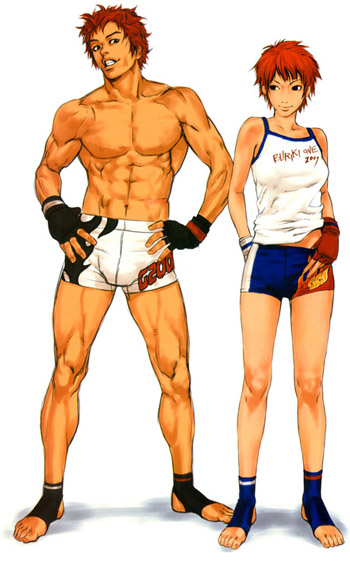
Yeah that’s a straight up burning red color.
Well if you look at some renders and artwork of Gai Tendo, you can see that his hair is actually red. However, like the vibrance of a passionate fire, sometimes the color of Gai’s hair changes between an obvious raging crimson and a bright fiery orange. No example can be stronger than the character select screen in Buriki One, showing a polygonal Gai with unmistakably red hair next to a portrait of Gai with equally unmistakably orange hair.
Note the similarity in color in Gai’s hair, gloves and shorts in the 3D model, compared to his drawn portrait.
The dubiousness of Gai’s hair color continued well past Buriki One’s release, in fact as recently as 2021 Hiroaki has drawn Gai with Capital O Orange hair. As pedantic as it may seem to be pulling out the Pantone color selector to find Gai’s “canon” hair color, I offer it as an exercise so we can declare the following: It’s all a coincidence. A very, very wild coincidence.
Gai Tendo and Kazushi Sakuraba feel so closely tied together they may as well be attached to the hip, but they are mostly coincidental figures in their similarities. While Gai may have been partially designed in the mold of Sakuraba, it was a version of Sakuraba before his meteoric rise into history. The timing just doesn’t line up and we have heard from the horse’s mouth that some key elements are there in linking them together, but others are not. Gai enters Buriki One under a bet, Sakuraba dyes his hair under a bet of his own. Gai is made to be the protagonist of Mixed Martial Arts in his universe, Sakuraba fights through the unthinkable to become the protagonist of Mixed Martial Arts in ours.
Give us a Buriki One port, you cowards. Let Gai Tendo live again.
